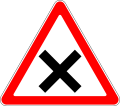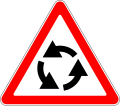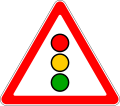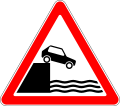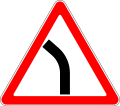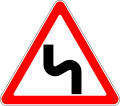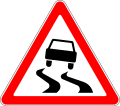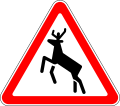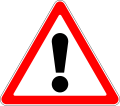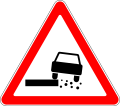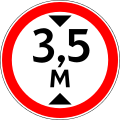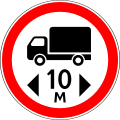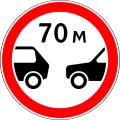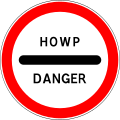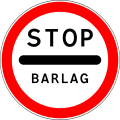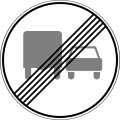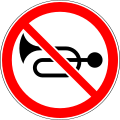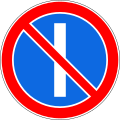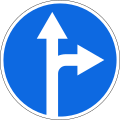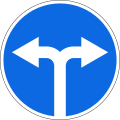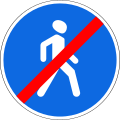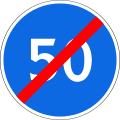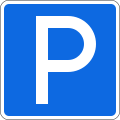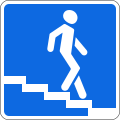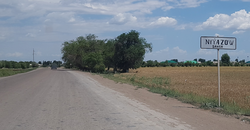
Road signs in Turkmenistan are similar to the road sign system of other post-Soviet states (e.g. Uzbekistan, Kazakhstan) that ensure that transport vehicles move safely and orderly, as well as to inform the participants of traffic built-in graphic icons. They generally conform to the Vienna Convention on Road Signs and Signals. [1] Turkmenistan acceded to the Vienna Convention on Road Signs and Signals on June 14, 1993. [2]
Contents
- Warning signs
- Priority signs
- Prohibitory signs
- Mandatory signs
- Information signs
- Service signs
- Additional plates
- References
- See also
Road signs in Turkmenistan are based on the ГОСТ 10807-78 [3] [4] and ГОСТ 23457-86 Soviet standards (both of them are no longer valid in Russia) and are defined in Ýol hereketi we howpsuzlygy but with inscriptions in Turkmen language and in Latin script only. [5] However, there are road signs in Turkmenistan that are similar in design to Turkish ones and the FHWA or Arial typeface is used. [6] Road signs in Turkmenistan are a mix of post-Soviet and Turkish road sign systems.
Road signs are divided into 7 categories:
| # | Category name | Category name (in Turkmen) |
|---|---|---|
| 1 | Warning signs | Duýduryjy belgiler |
| 2 | Priority signs | Artykmaçlyk beriji belgiler |
| 3 | Prohibitory signs | Gadagan ediji belgiler |
| 4 | Mandatory signs | Buýrujy belgiler |
| 5 | Information signs | Habardar ediji – görkeziji belgiler |
| 6 | Service signs | Hyzmat belgileri |
| 7 | Additional panels | Goşmaça maglumat belgileri (tabliçkalar) |











